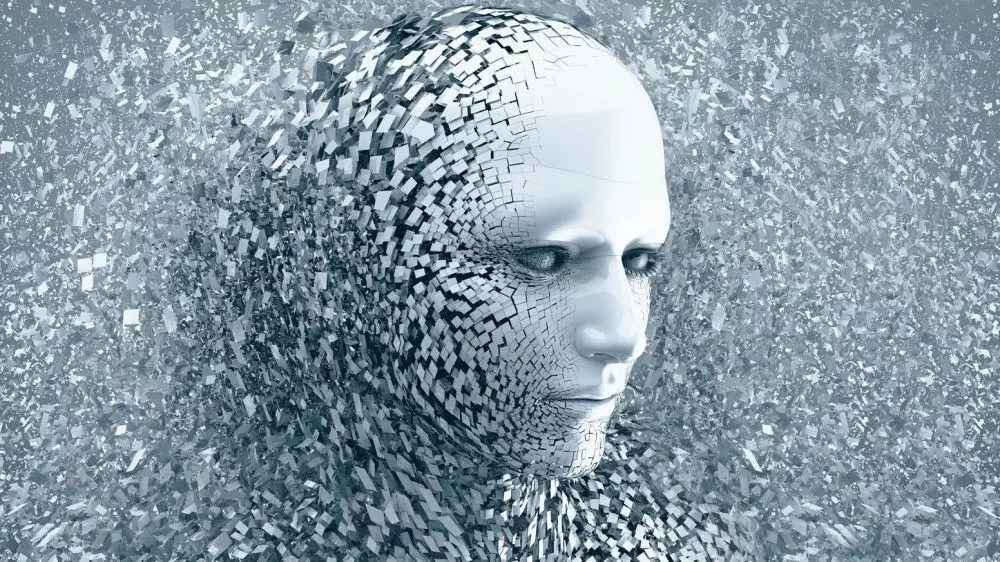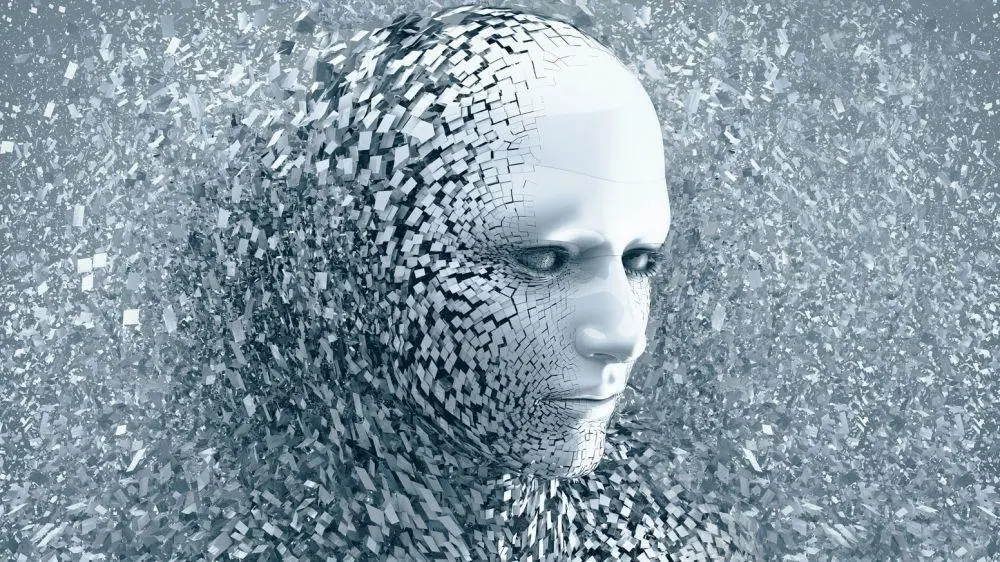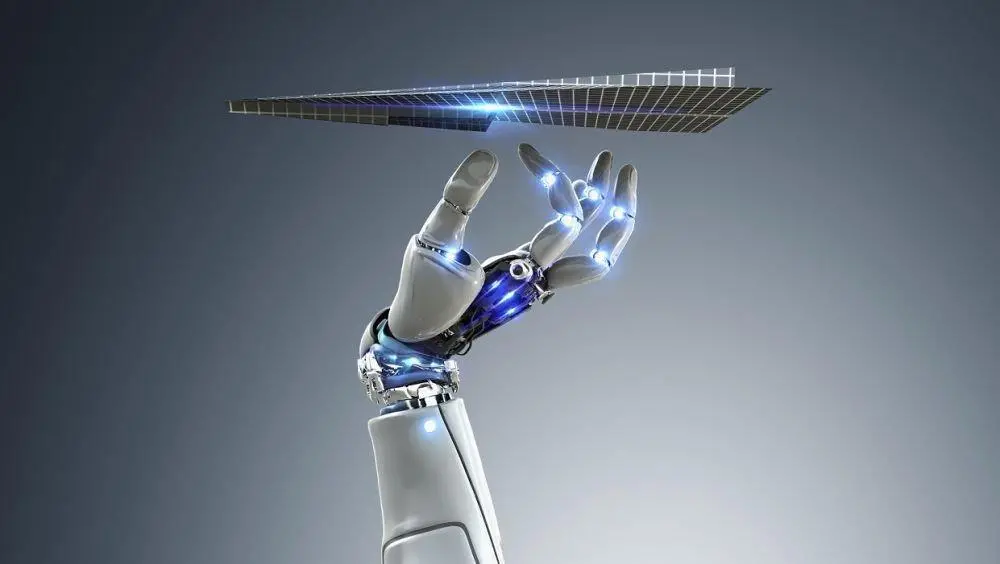Comments
- No comments found

Artificial Global Intelligence (AGI) is emerging as the convergence of human intelligence, artificial intelligence, machine learning, automation, robotics, web 3.0, big data, internet of things and 5G.

Let’s start from what intelligence is by its nature, regardless of how it is embodied, naturally or artificially. Intelligence is the power for cognition, logic, understanding, self-awareness, learning, emotional knowledge, reasoning, planning, creativity, critical thinking, problem solving, or GOAL setting.
Artificial intelligence is the ability by a machine to perceive data and infer information and to retain it as knowledge to perform a goal, task or behaviour that impacts real, virtual or mixed reality.
Intelligence in techno-systems, ICT and machines, is artificial intelligence, which is commonly implemented in computer systems using programs and smart hardware.

The former means “AI is the new Mind of unlimited power”. It is not just “AI is the new electricity”. Everything will be much smarter using powerful cheap chip AI that we get from the cloud or the edge devices.
Most big techno-bubbles feel it instinctively. Google bought in the last couple of years more than 13 Ai-companies. Alphabet — the parent company of Google and several former Google sub-companies — gains around 70% of its profit from Google's search engine, but it’s expected that in 2026, Google will depend mainly on AI projects, if it survives.
The latter is a more imagined threat of Artificial Superintelligence, as if super-intelligent machines end the human race. Almost as soon as it realizes what it is, it will proceed to surpass humanity in every way, leaving us behind.
Here is a good but typical wording of the fake threat.
“General AI could be the biggest achievement that humankind achieved since discovering fire and agriculture, after the machine reaches the technological singularity — the invention of artificial superintelligence — an upgradable intelligent agent would enter a “runaway reaction” of self-improvement cycles, with each new and more intelligent generation appearing more and more rapidly, causing an intelligence explosion and resulting in a powerful superintelligence that would, qualitatively, far surpass all human intelligence”.
In fact, Artificial Superintelligence is the only true blessing for humanity, and it is here, under study and development.
It is to our common advantage if the GAI becomes a distributed intelligence with a large and diverse set of humans providing guidance.
But why build a new sort of GAI at all? Creation of an effective GAI is critical because today the entire human race faces many extremely serious problems. The ad-hoc GAI we have developed over the last four thousand years, mostly made up of politicians and lawyers executing algorithms and programs developed centuries ago, is not only failing to address these serious problems, it is threatening to extinguish us…
But because existing multinational governance systems have failed so miserably, such an approach may require replacing most of today's bureaucracies with "artificial intelligence prosthetics", i.e., digital systems that reliably gather accurate information and ensure that resources are distributed according to plan…
In my opinion, it is critical that we start building and testing GAIs that both solve humanity's existential problems and which ensure equality of control and access. Otherwise we may be doomed to a future full of environmental disasters, wars, and needless suffering.
Alex "Sandy" Pentland
Professor of Computer Science, MIT; Director, MIT Connection Science and Human Dynamics labs; Author, Social Physics

Artificial Global Intelligence (AGI) is converging artificial intelligence and machine learning, smart data, smart web and the IoT to transform the world in a drastic way.
First of all, AGI will transform both the Internet and the global economy.
Within the next several years, AGI elements are to become embedded in all forms of technology that incorporate data processing, exchange and analysis.
The first AGI entities are to intelligently organize the world's data/information and make it free and universally accessible.
As a global network intelligence, AGI aims to integrate into one Data-World Platform all currently fragmented information services, such as the monetized services by Google while casting away useless services:
Search engine (Google Search), services designed for work and productivity (Google Docs, Google Sheets, and Google Slides), email (Gmail/Inbox), scheduling and time management (Google Calendar), cloud storage (Google Drive), social networking (Google+), instant messaging and video chat (Google Allo, Duo, Hangouts), language translation (Google Translate), mapping and navigation (Google Maps, Waze, Google Earth, Street View), video sharing (YouTube), note-taking (Google Keep), and photo organizing and editing (Google Photos), the Google Chrome web browser, etc.
Besides, AGI is set to become the natural AI-human interface replacing mobile devices’s digital assistants and dedicated home consoles, like Alibaba’s Tmall Genie, Amazon’s Echo and Google’s Alexa.
The opportunities created are enormous, ranging from new smart processes and services and breakthroughs in science and technology, to the augmentation of human intelligence and its convergence with the digital data world, structured as below:
The World of Entities and Relationships >
Digital World = Data Universe of Data Entities and Data Relationships >
Data Ontology/Semantics/Logic/Ethics/Science/Technology/Engineering >
Data Science > Big Data/Cloud Computing > Computer Science/Software (Data & Programs) >
Machine Learning/Deep Learning/ANN/AutoML >
Narrow AI >
Generalized AI (Internet/Web x.0) >
Science & Technology & Economy & Industry & Business & Society & Nation & City & Community & People & Nature & Environment & Space >
the I-World = Intelligent Universe
We are on the historical and dramatic way of creating Narrow Superintelligent AI systems which greatly exceed the cognitive performance of humans in special domains of interest.
Tomorrow will see superintelligent expert systems, superintelligent language translators, superintelligent conversational agents, superintelligent digital assistance systems, superintelligent engineering assistants, superintelligent gamers, superintelligent traders, superintelligent drivers, super-intelligent automation, superintelligent robotic systems, etc.
Super-human narrow artificial intelligences are driven by powerful but special algorithms to solve specific narrow problems, as ML systems, like DeepMind’s AlphaGo combining Deep Learning, Monte-Carlo Tree Search and Reinforcement learning to solve the ancient game of Go.
The road to Superintelligence or Global Intelligence requires passing through super-human narrow intelligence, sentient intelligence, self-aware sentient automation, human level self-conscious automation, self-aware intelligence or superhuman general intelligence.
Superintelligence is to involve a Master Algorithm underpinning domain-specific AI, ML, DL and classic algorithms, while guided by the encoded world model (the general data schema of things).
Kiryl Persianov's answer to Could an AGI be built on a single unified algorithm or will a hodgepodge of domain-specific algorithms be necessary?
The Superintelligence is emerging as a globally distributed hybrid human-cyber-physical intelligence converging AI and Human Intelligence with all the smart emerging technologies:
Global AI, Smart Techno-Human Convergence = RAI =
World’s Data + Advanced Analytics + ML (DNNs) +
Natural Intelligence + Human Minds + Human Knowledge +
AI + Cloud AI + Edge AI +
Virtual Reality and Augmented Reality +
Cyber-physical Systems +
Computers + the Internet + IoT + 5G +Blockchain +
Autonomous Things + Machines + Self-Driving Cars +
3D Printer +
Nanotechnology +
Biotechnology + Genetic Engineering +
Cognitive Robotics + Social Engineering +
Quantum Computing +
Smart Spaces + Smart Cities + …
Some key applications for the AGI are as follows:
1. AGI: General AI (GAI) + Internet + Web 3.0 + the Internet of things devices such as smart mobile devices, aerial (remote sensing), software logs, cameras, microphones, RFID readers, wireless sensor networks, etc.
All current AI systems are designed for a specific task and purpose. A strategic game computer cannot be used for a self-driving car.
GAI is also designed as domain-specific, revealing the cultural bias that the programmers, consciously or unconsciously, program into the system.
Russian, American, Indian, Chinese or European GAI will have some principles in common, but each will have the cultural and cognitive biases of their designers.
AGI is thus in need of a unified machine model of reality, which is a global data/information model of the world, physical or social, virtual or physical realities.
AGI is to represent the world, as the Global Data Reality, with all its furniture, as data structures encoded as computational models, programs and algorithms, remember Data Commander.
Broadly, Reality is the totality of the universe, known and unknown; all abstract and concrete objects; the sum total of all that is real or existent and all that is virtual and imaginary, whether hypothetical unobservable entities, God, numbers and other abstract objects, quasi-abstract entities, and possible worlds.
Reality covers all three interacting worlds, called World 1, World 2 and World 3
World 1: the world of physical objects and events, including biological entities
World 2: the world of mental objects and events
World 3: objective knowledge, the products of thought, abstract objects such as scientific theories, stories, myths, tools, social institutions, and works of art.
For AGI, it is the Data World, embracing Data World 1, Data World 2, Data World 3.
This demands Global Data Ontology, supported with critical theoretical or technical breakthroughs.
As for theoretical breakthroughs, AGI implies the new “paradigm shift”, like as follows:
As for technical breakthroughs, AGI is to be constructed as a convergence of natural and machine intelligences, as well as of all the emerging smart technologies:
AI + ANN + Intelligent Automation + Cognitive Robotics + Future Internet + IoT + Cyber-Physical Systems + Human Collective Intelligence
China, USA, Russia and global IT corporations are to invest billions of dollars to be the first to achieve AGI. Some even declared of the historical achievement.
However, Artificial Global Intelligence cannot emerge from model-blind and reality-ignorant deep learning machines.
So, true AGI requires the comprehensive and scientific synergy of Data, Models and Reality, with all the necessary theoretical or technical breakthroughs.
2. Machine, inductive, case-based learning using statistical techniques to give computer systems the ability to "learn" by trial and error from input data, without being programmed.
Applications for the Machine, inductive, case-based learning are just unlimited including analytics, the discovery, interpretation, and communication of meaningful patterns in data; predictive analytics, prescriptive analytics, enterprise decision management, descriptive analytics, cognitive analytics, big data analytics, retail analytics, supply chain analytics, store assortment and stock-keeping unit optimization, marketing optimization and marketing mix modeling, web analytics, call analytics, speech analytics, sales force sizing and optimization, price and promotion modeling, predictive science, credit risk analysis, and fraud analytics
3. The Global DataBase (GDB)
Formally, the GDB Information Processing System O is a quadruple
<T; D; M; A>, where
T is the top-level schema;
D is the domain/source schema;
M is the universal mapping between T and D, where the sources defined in terms of the global schema or vice versa or mixed or mapping between sources, without top schema;
A is the master algorithm, computing or effecting the universal mapping function, and as the universal classifier underpinning all manner of algorithms: computation or decision algorithms, etc.
And domain knowledge fields, as natural, cognitive, social and technical sciences, address to the ontological classes in all possible details, both theoretically and empirically.
In computer science and information science, a top-level formal ontology involves a symbolic representation, formal naming, and definition of the categories, properties, and relationships among the data, concepts, and entities substantiating one, many, or all domains.
The GOD could be specified or modelled as an ontology-driven data integration system:
A world data integration system I is a quadruple <G; S; M; A>, where
G is the global schema (over an alphabet AG);
S is the source schema, or source model, a source database of a domain of databases (over an alphabet AS);
M is the mapping between G and S, function computable by an algorithm;
A is data processing algorithm, associated with processing information, data can be read from an input source, written to an output device and stored for further processing in one or more data structures, as part of the internal state of the entity performing the algorithm.
The GDB Platform facilitates a global data Integration from many different sources as below to generate actionable knowledge, new intelligence and comprehensive profiles of entities, persons or groups, objects or substances, events or processes, links or relations or structure and patterns in behavior, communication, movement and relationships:
4. Smart Data Global Platform: Artificial Intelligence + Big Data + the Internet of Things + Blockchain Technology
Digital platforms are becoming the preferred lifestyles and dominant business model in the future. Flows of data and information, searches, communication, video, and transactions now generate more economic value than the global goods trade.
Global digital platforms, such as cloud computing systems or mobile platforms or social networks, are used to learn, find work, show your creativity and talent, and build personal networks. A billion and more people have international connections on social media, and multi-millions take part in cross-border e-commerce, participating in a digital globalization.
Digital data flows transmit valuable streams of information and ideas enabling the movement of goods, services, finance, and people. Currently, every type of commerce of transactions could have its digital component.
Most booming businesses are related to digital big data platforms. For example, the largest global companies, Google, Amazon, Apple, or Facebook, are digital data platforms, in the first place. Quora is a digital platform. Twitter is a digital data platform. Instagram is a digital data platform. Linked-in is a digital data platform. Any website is a digital data platform.
5. A smart city digital platform using electronic data collection sensors to manage urban assets and resources efficiently.
The smart city data collected from citizens, devices, and assets that is processed and analyzed to monitor and manage traffic and transportation systems, power plants, water supply networks, waste management, law enforcement, information systems, schools, libraries, hospitals, and other community services.
The smart city concept integrates AI solutions, advanced ICT, and various physical devices connected to the Internet of things to optimize the efficiency of city operations and services and connect to citizens.
EIS Encyclopedic Intelligent Systems has developed the first real model of the Real/Causal AI, including the following elements of its Universal Intelligent Platform, I-World:
Machine World Model;
Master Algorithm, Causal.World;
World Data Framework, World.Data;
Global Knowledge Base, World.Net;
Domain Knowledge Base, Domain.Net

The development of a universal artificial intelligence has reached a stage of a proof of principle, concept and mechanism in which the best AI technology stack of hardware, software and dataware is constructed and tested to explore and demonstrate the feasibility of the Real/Causal AI Model.
Leave your comments
Post comment as a guest